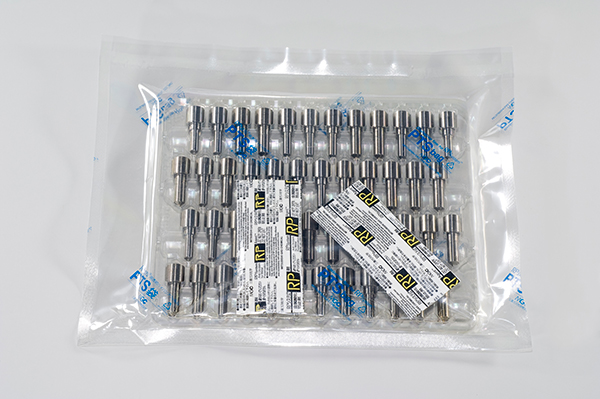Manufacturers are continuously challenged to make the conscious shift towards sustainable practices. What can be done to help achieve those goals?
In our ever-evolving world, manufacturers are continuously challenged to make the conscious shift towards sustainable practices. Customer demand and cost savings are at the root of many organization’s commitments to incorporating sustainability efforts. As current manufacturing processes continue to clash with increasing customer demand for eco-friendly alternatives, manufacturers are forced to audit their procedures in an attempt to become more environmentally conscious.
According to the U.S. Energy Information Administration, in 2020, the industrial sector accounted for more than one third of the total U.S. energy consumption.1 Within that wider industrial sector, which includes manufacturing, mining, construction, and agriculture, the manufacturing industry accounted for 75 percent of energy consumption. The vastness of the industry and widespread energy consumption confirm the need for a continuous focus on sustainability.
Sustainability efforts have become a core guiding principle for organizations across the manufacturing industry, due to company mission statements, customer demand, and mandated regulations. According to the Energy & Climate Intelligence Unit, at least 20 percent of the world’s largest public companies currently have net zero commitments.2 While these goals and accomplishments portray progress, there is still plenty to come in terms of guidance and regulations from state and federal entities. Until then, manufacturers continue to seek ways to fulfill internal and external sustainability requirements.
Manufacturers are continuously challenged to seek and adopt new technology and solutions that improve their business and support their journeys to sustainability. The umbrella term “sustainable manufacturing” encompasses many facets – environmental impact, cost, energy consumption, waste management, and even the safety and health of team members. Technological advances have become a key component in helping companies achieve their goals for each of these initiatives.
One of the most beneficial advances has come in the form of product protection and storage. Once products or components are engineered, manufacturers are faced with the challenge of safeguarding those items during shipping and long-term storage, which in many cases, can become a months-long to even years process.
Particularly as of late, when companies across the globe are dealing with an uncertain supply chain, manufacturers are faced with the importance keeping products damage-free from rust and oxidation. Critical components such as semiconductors, auto and machine parts, and electronics can be ruined by oxygen and moisture, impact, temperature, and poor handling. Through innovative packaging technology, companies can safely ship and store their sensitive materials with the peace of mind they will arrive in the same condition, even months or years in the future, as they were originally manufactured.

When thinking of packaging protection, it is common to imagine cumbersome boxes, large amounts of plastic, or expensive technology that is not feasible for most companies. Mitsubishi Gas Chemical has designed an innovative all-in-one packaging solution that aims to enhance original product integrity in an effective and efficient manner. RP System consists of a gas barrier bag and a customized RP agent composed of oxygen and moisture absorbing compounds to maintain product quality. The bag is hermetically sealed to prevent oxygen and moisture penetration, and the RP agent and bag can be customized, depending on the needs of the item being shipped or stored. With packaging innovations like these available to manufacturers, they then have the ability to shift their production styles and continue to meet customer product demand while also offsetting environmental impact.
Over the years, many manufacturers have transitioned to a lean, “just-in-time” production model, which aims to reduce time within the production cycle and decrease response time from customer request to fulfillment. Unfortunately, the short production runs are often more energy intensive due to the amount of energy needed to turn equipment on and off regularly. Additionally, due to current challenges, the just-in-time method is becoming problematic due to breakdowns throughout the supply chain. Manufacturers are working with reduced staff, delayed shipping times, and last-mile delivery concerns, which make it difficult to fulfill orders with limited turnaround time. Manufacturers must rethink their processes and focus on incorporating better forecasting models and larger factory runs. Through efficient factory runs and better forecasting, manufacturers can produce larger quantities of products in advance to have supplies at the ready when needed and safely store the remainder for future use and shipment.
Another important task at hand is reducing the number of parts and materials that need to be returned, exchanged, or refurbished. Returning items takes a toll on the customer, manufacturer, and environment, with a majority of returned items ending up in landfills, unable to be repurposed. By focusing on product protection from the elements during shipping and storage, manufacturers can ensure their products will be safeguarded throughout the entire supply chain, therefore reducing the amount of damaged and returned materials.
Manufacturing and sustainability are complex topics. While no one has the answer for how to perfectly balance business success with 100 percent sustainable operations, companies must continue to evolve with the times and incorporate technologies and new manufacturing processes that will go a long way on the journey to achieving sustainability goals.

About the Author:
Sean J. Hael, North American General Manager Sales & Marketing, Oxygen Absorbers Division
Sean Hael graduated from the University of Wisconsin in Milwaukee with a degree in Public Relations and Advertising. After graduation, he spent 8 years in Japan learning about international business culture and mastering the language. Sean joined Mitsubishi Gas Chemical America in New York as a sales representative upon his return from Japan in 2013.
In 2017, Sean assumed the position of Sales and Marketing manager in the oxygen absorbers division and was promoted to his current position as General Manager of Sales and Marketing in February 2021.
Sean was an integral part of the Mitsubishi Gas Chemical America team that launched the oxygen absorbing resin NutraSave™ in 2017. That same year, Sean gave an innovation stage presentation on the shelf-life extension technology during PACK EXPO and also penned multiple articles, which appeared in such publications as Packaging Strategies and Food Safety Magazine.
Sean lives with his wife and twin daughters in Milwaukee, Wisconsin.
To learn more about Mitsubishi Gas Chemical’s oxygen absorber technology visit rpsystem.info.
1 “U.S. Energy Information Administration – EIA – Independent Statistics and Analysis.” Use of Energy in Industry – U.S. Energy Information Administration (EIA), 2 Aug. 2021
2 “Taking Stock: A Global Assessment of Net Zero Targets.” Energy & Climate Intelligence Unit, Mar. 2021,
In this episode, I sat down with Beejan Giga, Director | Partner and Caleb Emerson, Senior Results Manager at Carpedia International. We discussed the insights behind their recent Industry Today article, “Thinking Three Moves Ahead” and together we explored how manufacturers can plan more strategically, align with their suppliers, and build the operational discipline needed to support intentional, sustainable growth. It was a conversation packed with practical perspectives on navigating a fast-changing industry landscape.